Talk about a fascinating person! Daniel Tammet calls himself a "writer, linguist and educator," but he is perhaps best known for reciting pi to 22,514 decimal places from memory, taking 5 hours and slightly over 9 minutes to complete his task in 2004. Tammet's memoir, Born on a Blue Day, details his life "outside the box" as an autistic savant and a synesthete: not only is he gifted with extraordinary abilities, he is also successful at communicating them. Daniel Tammet offers us the real gift of seeing his differences not as disabilities, and not as genius - but as the very human experience of making life work with the tools you are given.
As I said, Mr. Tammet is a synesthete: he experiences numbers with particular textures and colors. If you follow the link to his website, you will find illustrations of his visualizations. Today's pi day pie will focus on his painting "Pi Landscape," which you can buy from his website as a set of postcards. When I saw this recipe from Saveur, I realized the painting reminded me of colored meringue, and the idea for this recipe was born. Unfortunately, the colors he used are not especially conducive to natural colors and flavors (to me, relying on food color alone would be cheating, but if you want to try it that way, it would certainly be easier) so I hope Mr. Tammet will forgive my pie's weak approximation of his pi.
I created a map using axial symmetry to help Mr. Tammet's painting come to life. I created a series of circular two-dimensional patterns that could be expressed in 9 three-dimension layers, which would make a two-dimensional version of the pi landscape painting on the faces of a radial segment of my cylander. (Deep breath.) In plainer English, I made drawings of concentric circles that, when copied in meringue layers, would create a cylander. A wedge cut from this cylander should have an approximate copy of "Pi Landscape" on each cut side, or face.
I did it like this: (start from the left top corner and go left to right - hey, if not for circles, my map would look kind of Neo-plastic, no?)
There are computer programs that do this for you, but I just eyeballed it, dividing the painting into "stripes," imagining each "stripe" as a multicolored line forming the radius of each circle, and finally extending the colors from that line all the way around the circle (axial symmetry, as I said.)
I tend to avoid food dyes, even natural ones. I tried several versions of this recipe, but finding a blue food that stayed true to color (or even close) didn't work that well. In researching blue foods on the internet, I came across a Thai recipe for blue dumplings dyed with tea made from the Butterfly Pea flower, and I realized that flower-based teas were the answer! (And if you're wondering what kind of person would order a rare tea from overseas to make pi day work, yes, that person would be me!)
 On to the recipe: I used this piecrust, prebaked, as instructed in the link. You can use any prebaked piecrust you like (though using pistachios offers another chance to use the letters P and I in this project.)
On to the recipe: I used this piecrust, prebaked, as instructed in the link. You can use any prebaked piecrust you like (though using pistachios offers another chance to use the letters P and I in this project.)I filled it with a quick microwave lemon curd for the base (both can be made ahead of time and refrigerated, then assembled a short time before adding the meringue.)
Lemon Curd Filling
½ cup sugar
4 egg yolks
½ cup lemon juice
4 tbsp butter, in pieces
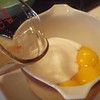 Combine the eggs, lemon juice, and sugar with a whisk in a large microwave-safe bowl. Microwave in 30-second increments, whisking well after each, for about 4 minutes; the curd will bubble up and thicken so that it will coat the back of a spoon. Whisk in the butter, stirring until it completely disappears. Pour into your cooked, cooled piecrust and chill in the refrigerator.
Combine the eggs, lemon juice, and sugar with a whisk in a large microwave-safe bowl. Microwave in 30-second increments, whisking well after each, for about 4 minutes; the curd will bubble up and thicken so that it will coat the back of a spoon. Whisk in the butter, stirring until it completely disappears. Pour into your cooked, cooled piecrust and chill in the refrigerator.π- colored Meringue
approximately 18 egg whites (or use pasteurized boxed egg whites - better to have too much than too little)
Pinch of saffron threads
2 tsp matcha tea powder
2 butterfly pea tea bags brewed together in hot water to cover
2-3 butterfly pea tea + 1 hibiscus or "raspberry hibiscus" tea bags brewed together in hot water to cover
2 tbsp purple grape juice
Natural colors as needed
Water
3 tbsp sugar for each of the 6 meringue flavors
1/2 tsp cornstarch for each 3 egg whites
Natural food coloring, as needed
Be forewarned: this recipe is going to mean lots and lots of cleanup! I found it simplest to make each meringue separately and clean the whisk, bowl, and saucepan each time. It also helped to go from white to the darkest color.
 Place a 6 large plastic zip-top bags inside 6 large water glasses and pull the zip-top edge over the outside of the glass rim (you will put each finished meringue in its own bag.)
Place a 6 large plastic zip-top bags inside 6 large water glasses and pull the zip-top edge over the outside of the glass rim (you will put each finished meringue in its own bag.)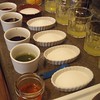 "Bloom" your saffron by grinding it between your fingers and adding it to 2 tbsp.hot water. Brew your in a small container teas using just enough water to cover the tea bags (you'll need 2 tbsp of each.) Set up a mise-en-place of your egg whites and cornstarch, teas and sugar (see below.)
"Bloom" your saffron by grinding it between your fingers and adding it to 2 tbsp.hot water. Brew your in a small container teas using just enough water to cover the tea bags (you'll need 2 tbsp of each.) Set up a mise-en-place of your egg whites and cornstarch, teas and sugar (see below.)Starting with the white meringue, put 3 tbsp sugar and 2 tbsp water in a small heavy saucepan. Put three egg whites plus 1/2 tsp cornstarch in your mixer and begin to whisk (a stand mixer is critical to this recipe. Two stand mixers and an extra set of hands would be even better) Place your saucepan on high heat and stir with a whisk. When the sugar develops bubbles that "stack" or start to rise up the sides of the pan, remove from the heat. As soon as your egg whites are white, smooth, and hold soft peaks, slowly stream the hot sugar syrup into the meringue, whisking slowly to incorporate. Stop and scrape down the sides of your bowl, and continue whisking at high speed until glossy and the meringue holds peaks. DO NOT OVERBEAT! (This technique is called Italian Meringue)
Remove the meringue to a ziploc bag and set aside.
- Repeat above steps but make the syrup using 3 tbsp sugar and 2 tbsp saffon "tea." for a light yellow color.
- Use a spatula to clean your bowl and whisk, rinse your saucepan, and repeat, but use 3 tbsp sugar, the matcha tea powder and 2 tbsp water, leaving the Matcha powder in the water
- Clean and dry your bowl, whisk, and saucepan. Use butterfly pea tea and follow the steps above for the light-blue meringue.
- Again, using the butterfly pea tea with the hibiscus, follow the above directions to make the dark blue meringue.
- Using grape juice, follow the directions above for the purple meringue.
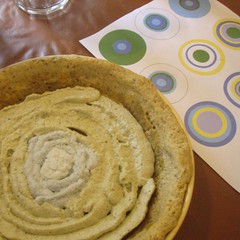 You should now have six quart-size ziploc bags filled with colored italian meringue. Bring your filled pie shell out of the refrigerator. Zip the bag tops and snip a small part off one corner; use this as a piping bag. Following the nine diagrams provided (the dashed areas indicate no meringue) pipe concentric circles of the different colors onto the filling in nine layers.
You should now have six quart-size ziploc bags filled with colored italian meringue. Bring your filled pie shell out of the refrigerator. Zip the bag tops and snip a small part off one corner; use this as a piping bag. Following the nine diagrams provided (the dashed areas indicate no meringue) pipe concentric circles of the different colors onto the filling in nine layers.Return the pie to the refrigerator (or freezer, for easy cutting) for at least an hour. Using a brûlée torch, brown the tops of the meringue. Serve and enjoy!
In Mr. Tammet's honor, I would like to use today's post to highlight two charities dedicated to improving the lives of people on the autism spectrum, while appreciating autistics for who they are and what they have to offer. Autism, affects more children than AIDS, diabetes, and childhood cancers combined: chances are, a family close to you is affected by autism.
Please take a moment and click through to learn about and support GRASP (The Global and Regional Asperger's Syndrome Partnership), an organization that envisions "a world where all individuals on the autism spectrum are respected, valued, and fairly represented; where appropriate supports and services are readily available to those in need; and where people on the spectrum are empowered to participate in policy and personal decisions that affect their lives."
In the greater Chicago area, please support Have Dreams, a direct-service organization that "aspires to help individuals with autism improve their abilities to learn, function independently and socialize so that they may realize their full potential and develop into contributing members of their communities." Have Dreams offers services via after-school programs, family and professional services and a vocational program.
Private funding and public advocacy are critical to making sure that autistic children - wherever they may fall on the spectrum - get what they need.
Please take a moment and click through to learn about and support GRASP (The Global and Regional Asperger's Syndrome Partnership), an organization that envisions "a world where all individuals on the autism spectrum are respected, valued, and fairly represented; where appropriate supports and services are readily available to those in need; and where people on the spectrum are empowered to participate in policy and personal decisions that affect their lives."
In the greater Chicago area, please support Have Dreams, a direct-service organization that "aspires to help individuals with autism improve their abilities to learn, function independently and socialize so that they may realize their full potential and develop into contributing members of their communities." Have Dreams offers services via after-school programs, family and professional services and a vocational program.
Private funding and public advocacy are critical to making sure that autistic children - wherever they may fall on the spectrum - get what they need.
Please be generous.

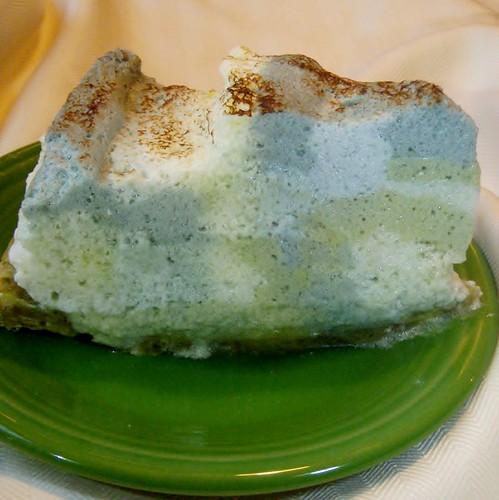

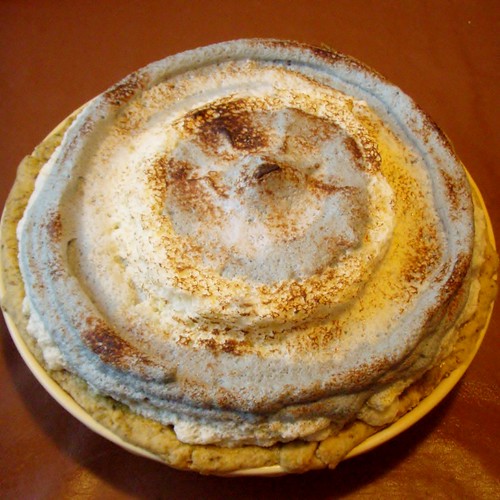




No comments:
Post a Comment